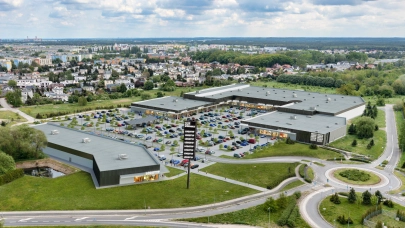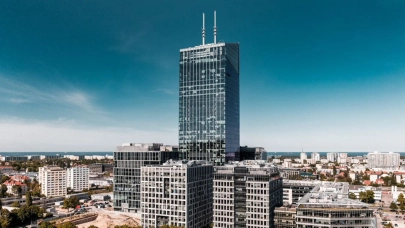
Chicago, Houston, New York, San Francisco and Warsaw have over 40% of their total office stock certified ‘green’, making their office markets some of the most environmentally sustainable in the world, according to Savills World Research. But in many major cities there is a significant disconnect between city governments’ ambitious net-zero targets and the green credentials of existing stock.
As part of its 2022 global "Impacts" research programme, the international real estate advisor says 38% of North American and European cities have set net-zero targets, while the proportion is 18% of cities in Latin America, 17% in Sub-Saharan Africa, 14% in Asia Pacific, and 4% in the Middle East and North Africa.
Some major cities including San José, Oslo, and Berlin have been identified as having some of the most ambitious city-level net-zero goals in the world, Savills says, but currently under 20% of their office stock is certified ‘green’ based on its analysis of the distribution of LEED, BREEAM and WELL-certificated office buildings. Meanwhile, in some office markets such as Chicago, Houston, New York and Warsaw, whilst city net-zero targets may be currently less ambitious, the proportion of office stock that has a green certification is in excess of 40%, according to Savills. On average, only 28% of total stock in the top 20 cities with the highest number of green buildings is certified, meaning that over 70% of existing stock will need to be retrofitted.
Katarzyna Chwalbińska-Kusek, Head of ESG & Sustainability at Savills Poland, comments: “To achieve climate neutrality, we need much broader strategies than just building certification. The right choice of a certification scheme for sustainable buildings should complement a broader ESG strategy designed to meet net-zero targets and minimize the negative impact of buildings on our natural environment and health. We should remember that by 2030 all new commercial buildings will have to reach net zero, followed by all buildings in 2050. The biggest challenge is that over 85% of existing buildings will still be with us in 2050, when Europe aims to be climate neutral.”
Paul Tostevin, director in Savills World Research, comments: “There’s been a big increase in demand for offices to publish their operational carbon emissions, however our analysis shows that, proportionally, the amount of certified ‘green’ stock in many cities is still pretty small. There are therefore opportunities for real estate developers and investors to grow the amount of certified office stock, not least as many of these locations are facing increasingly stringent regulation by city authorities setting ambitious net zero targets.
“As highlighted in the recent report from the UN’s Intergovernmental Panel on Climate Change, some of the most established office locations face the biggest challenge given they need to retrofit existing stock in an environment of rising construction costs. Meanwhile in less mature markets, typically those in the Middle East, Africa and India, there’s an opportunity to add new environmentally-compliant buildings from the outset.”
Chris Cummings, Savills Earth director at Savills, adds: “The future upgrade of office stock will be driven both by occupiers and investors. There is strong competition in the investment market for office buildings with high green credentials and pricing for these assets is keen. Occupiers are increasingly looking for a carbon ‘story’ from a building, with avoiding demolition rising up the list of positive attributes, whilst cities with ambitious net zero goals are also placing increasing weight on the carbon impact of construction and therefore prioritising retrofit and refurbishment over new development. Local and national policy vehicles, however, aren’t yet doing enough to support these types of projects. Given the gap between many cities’ ambitions and the current state of office stock collaboration between public and private sectors is key.”



